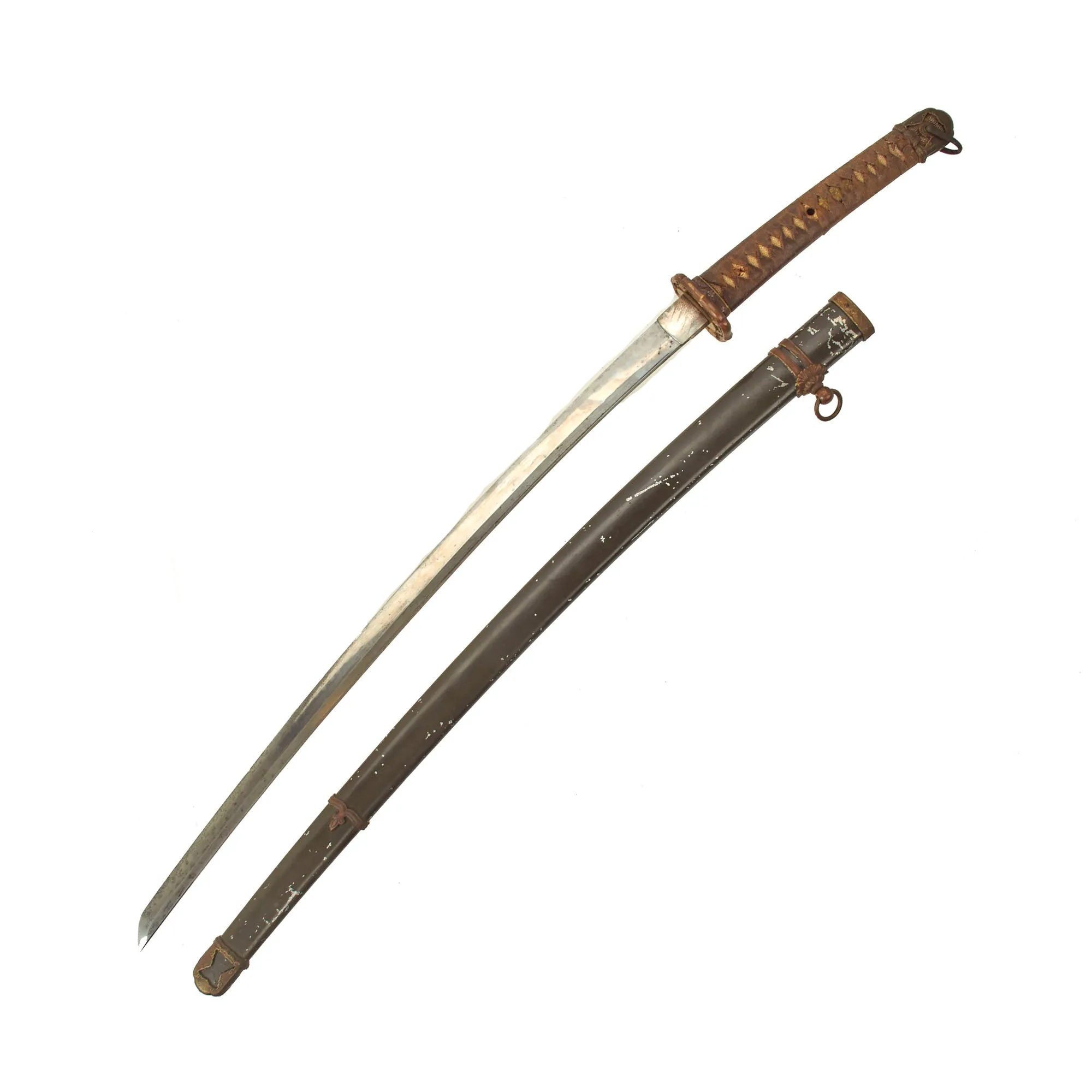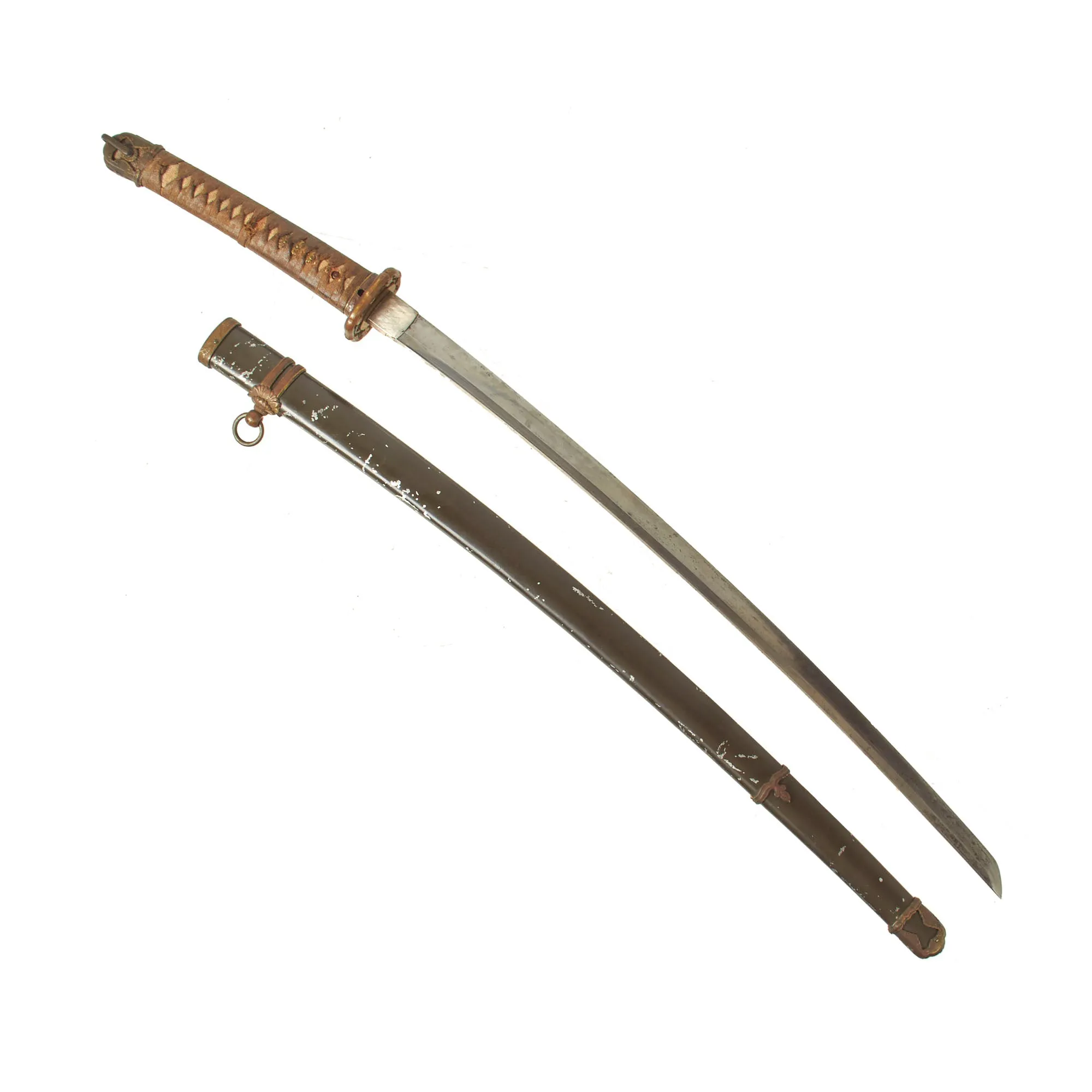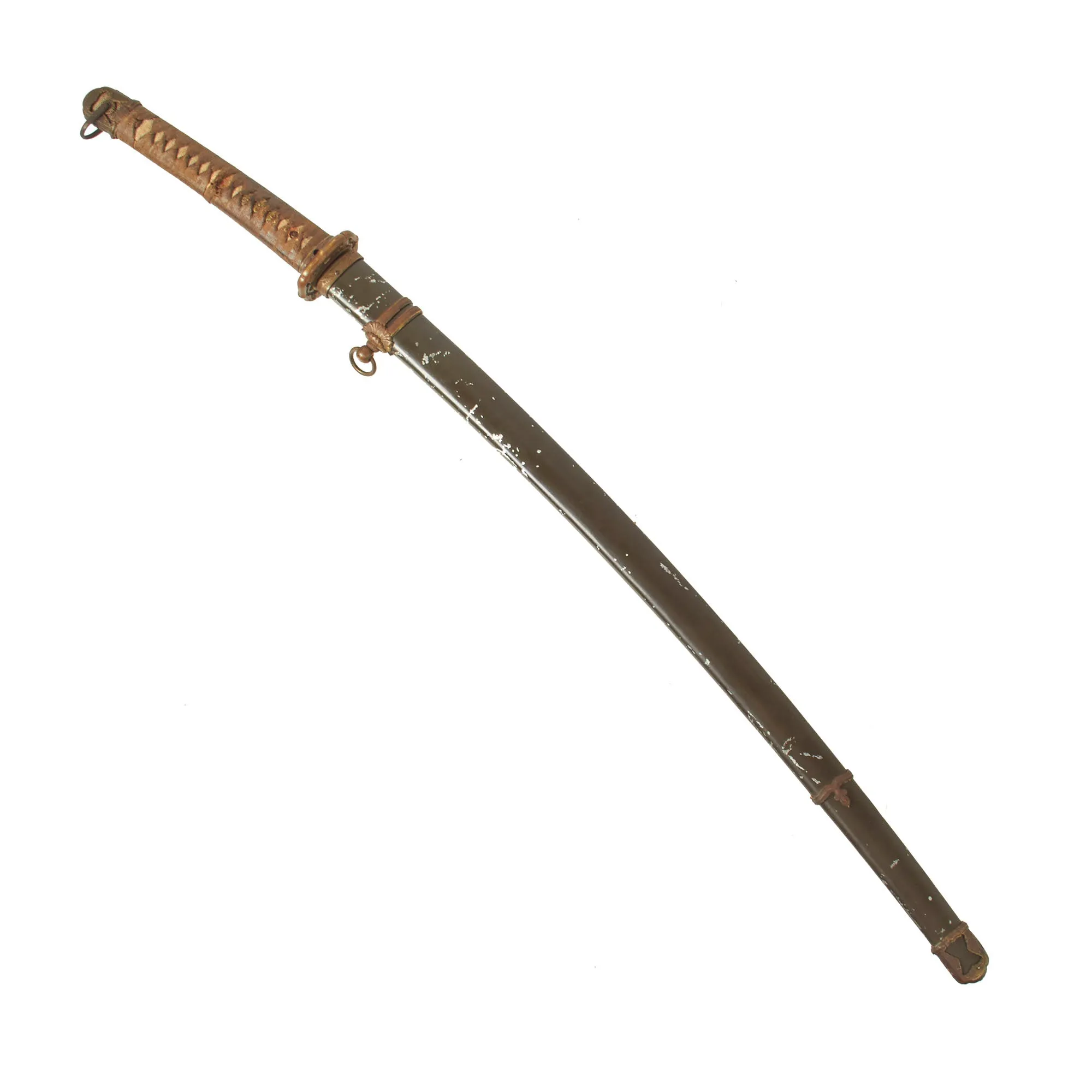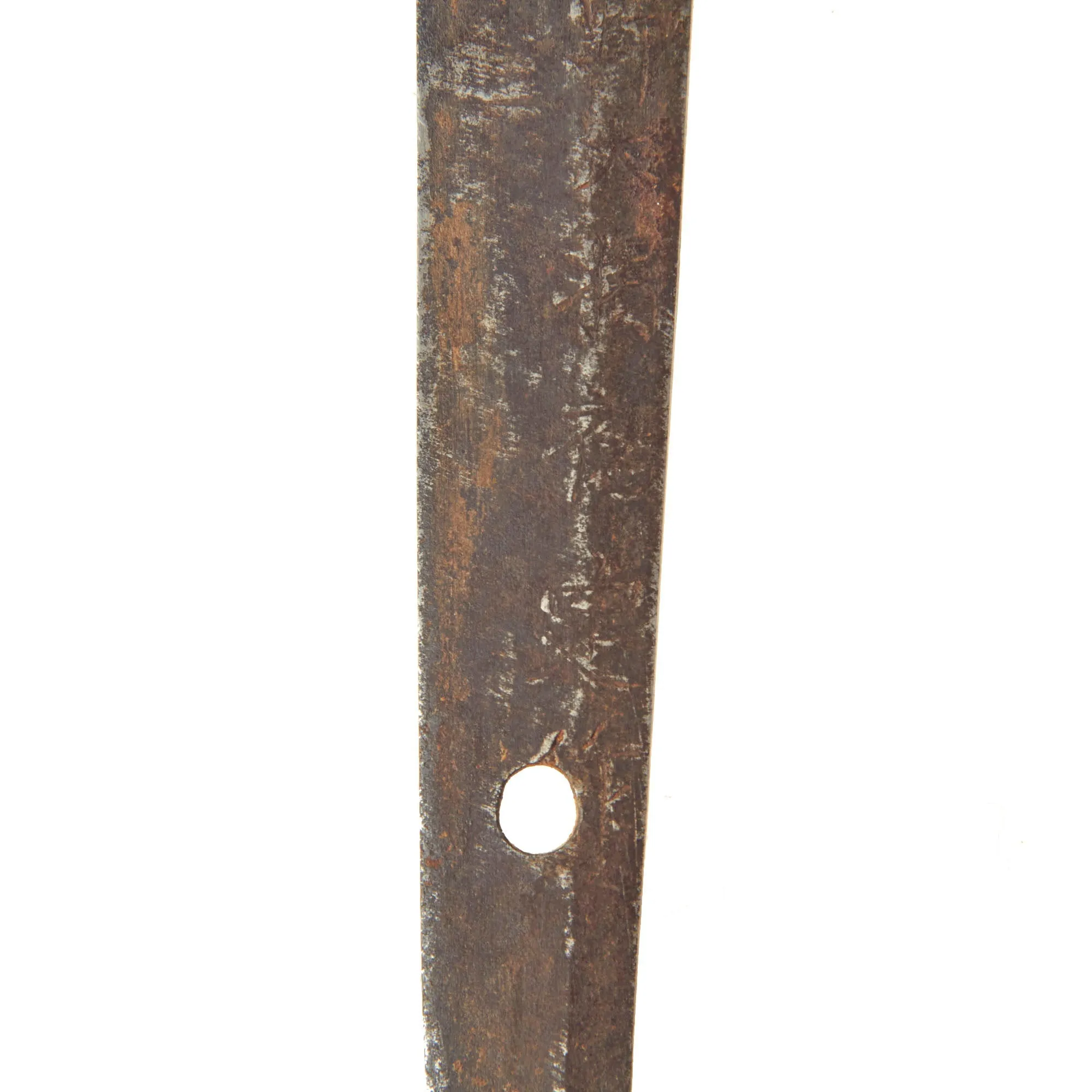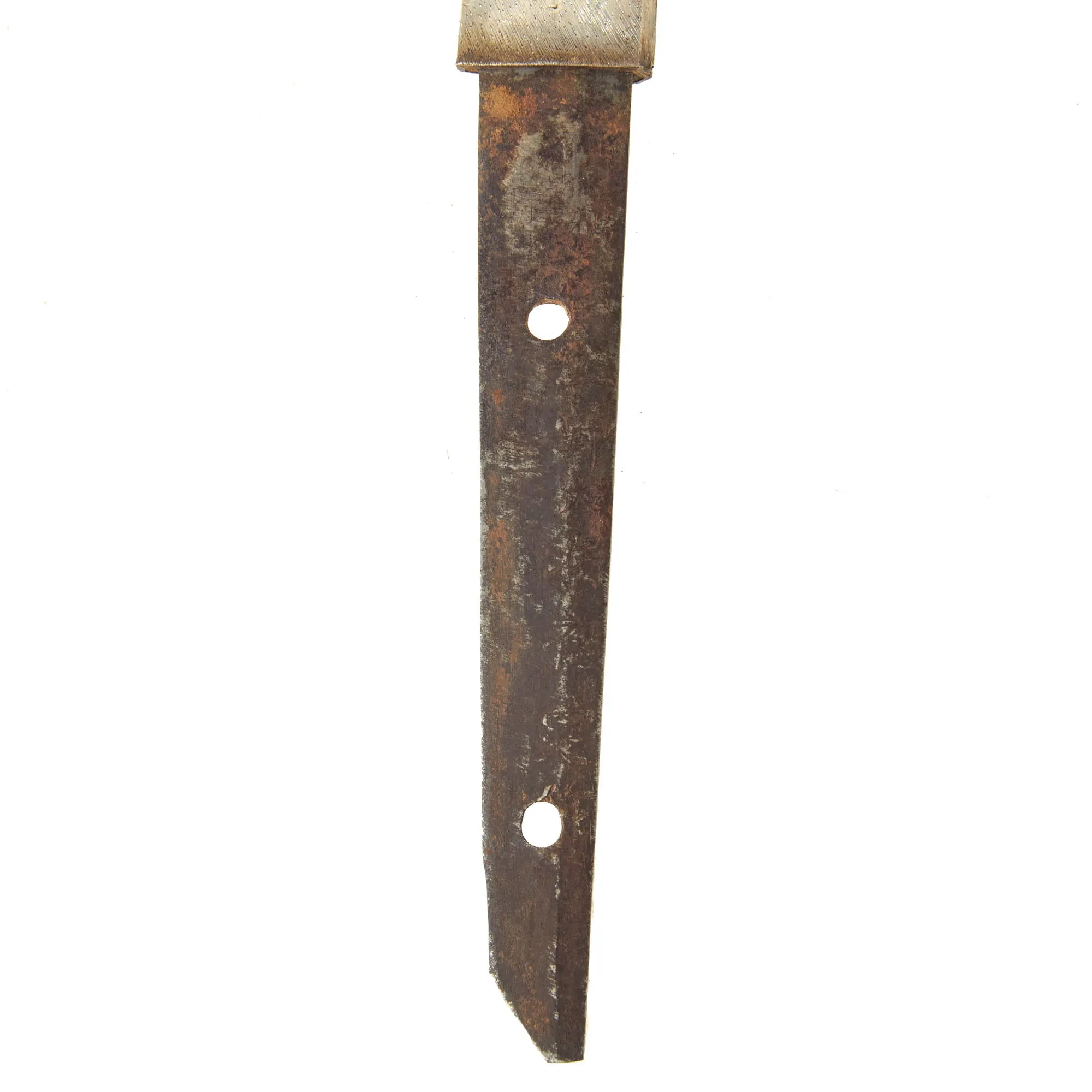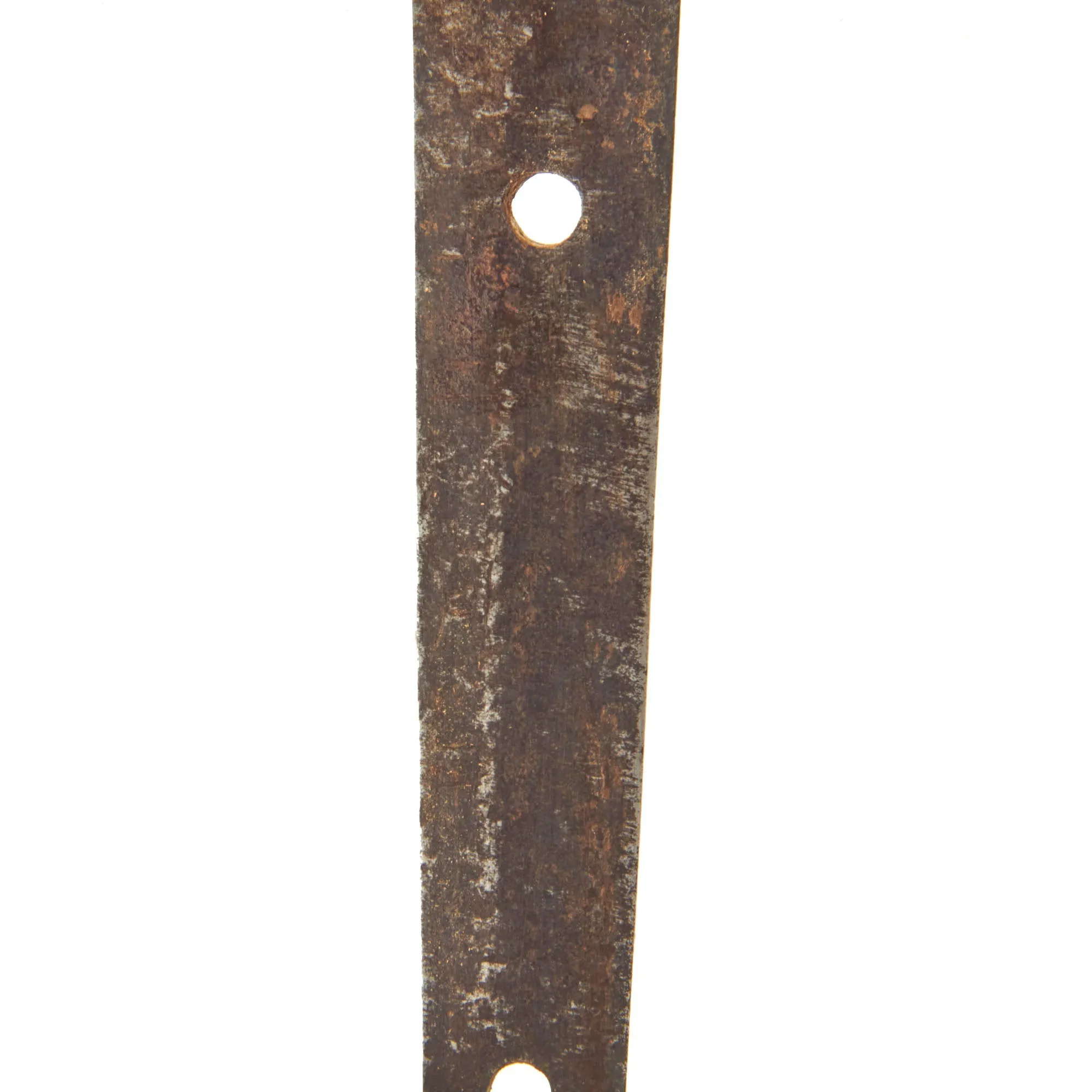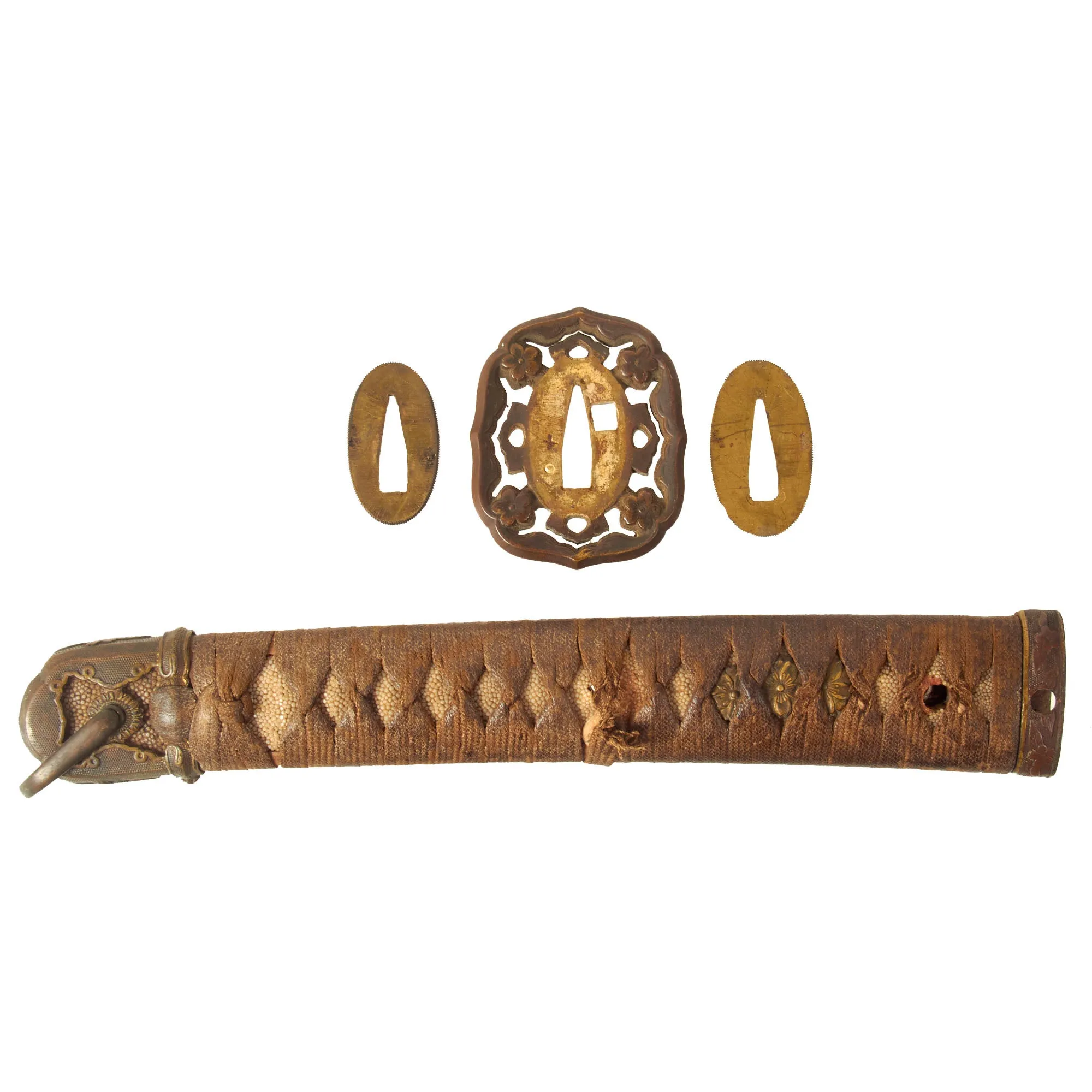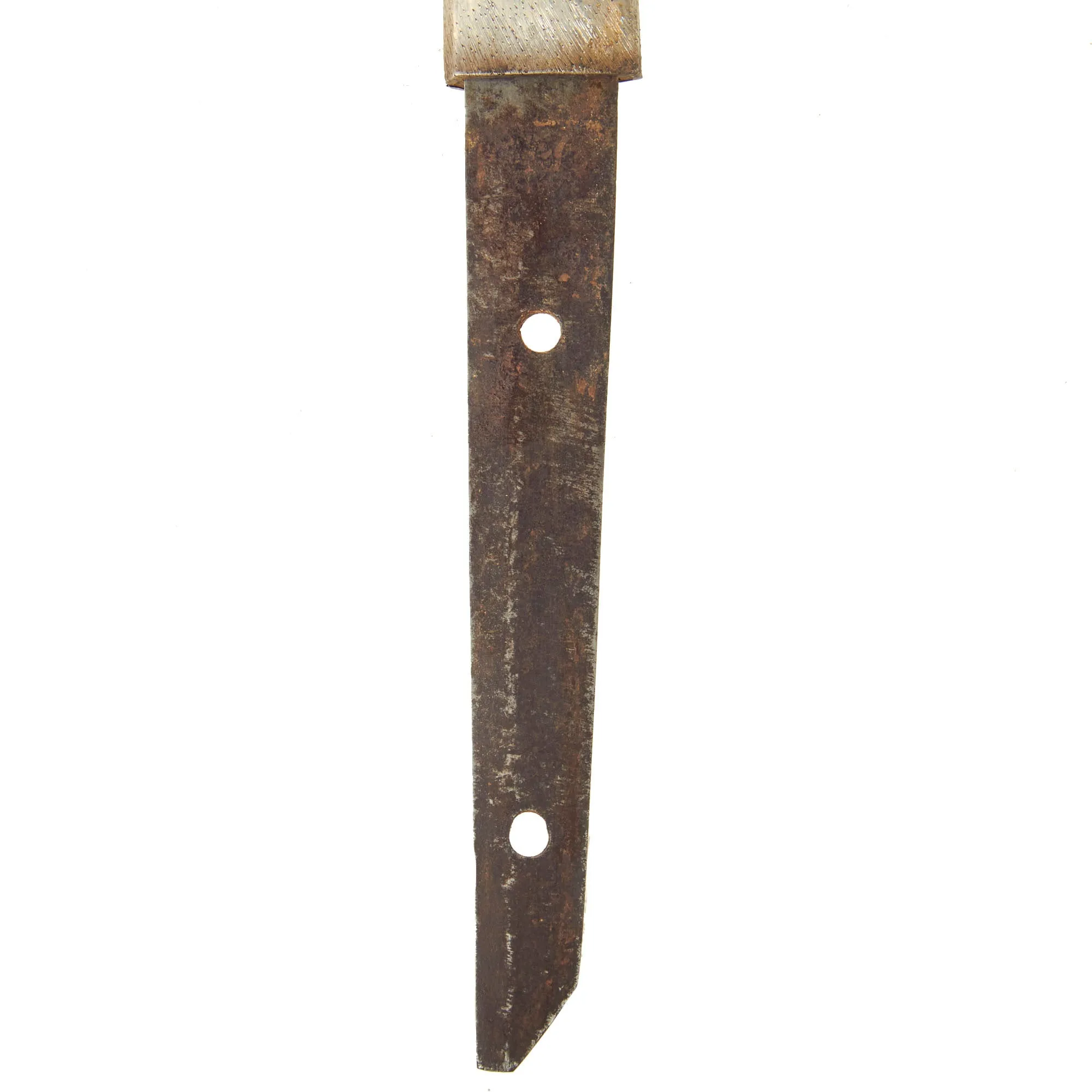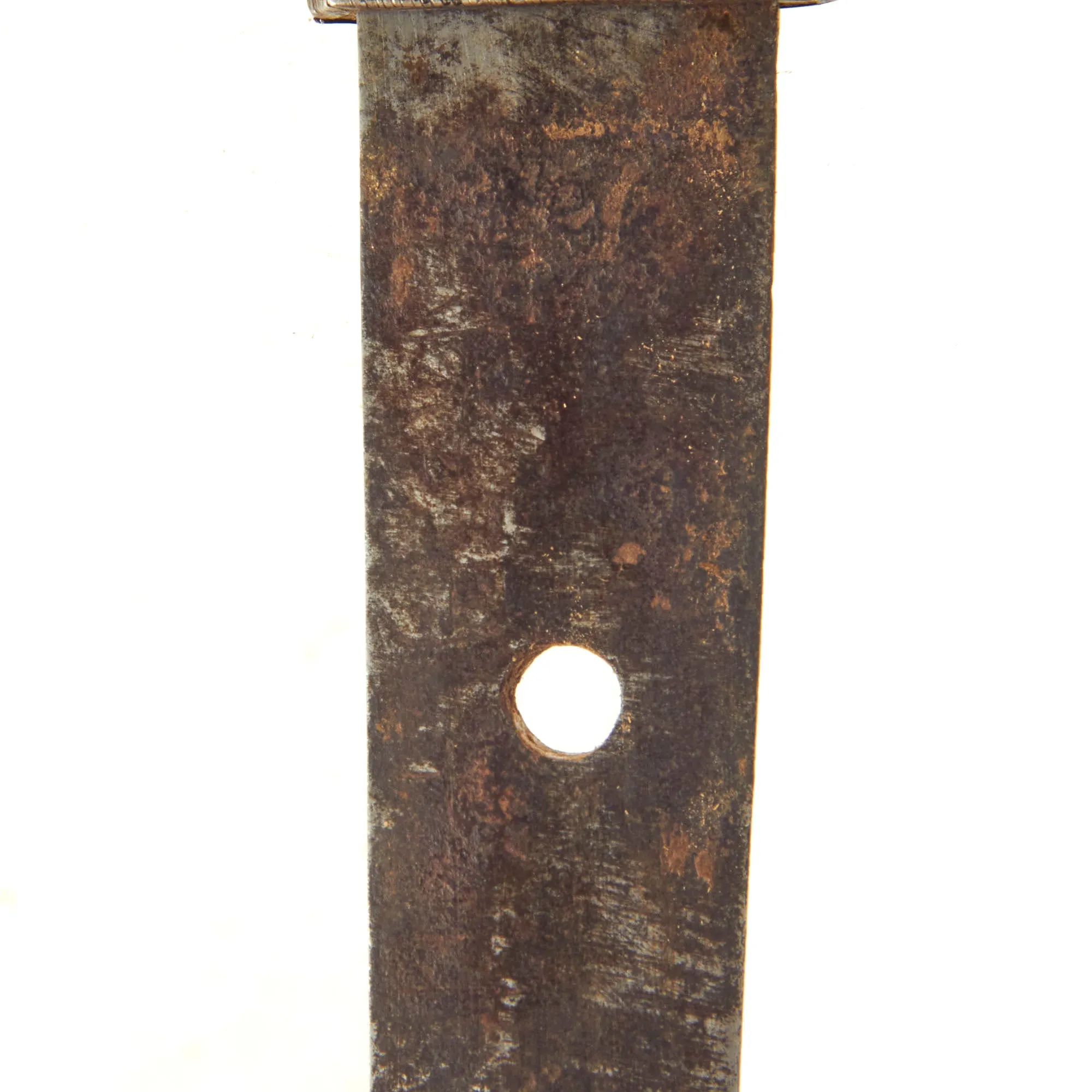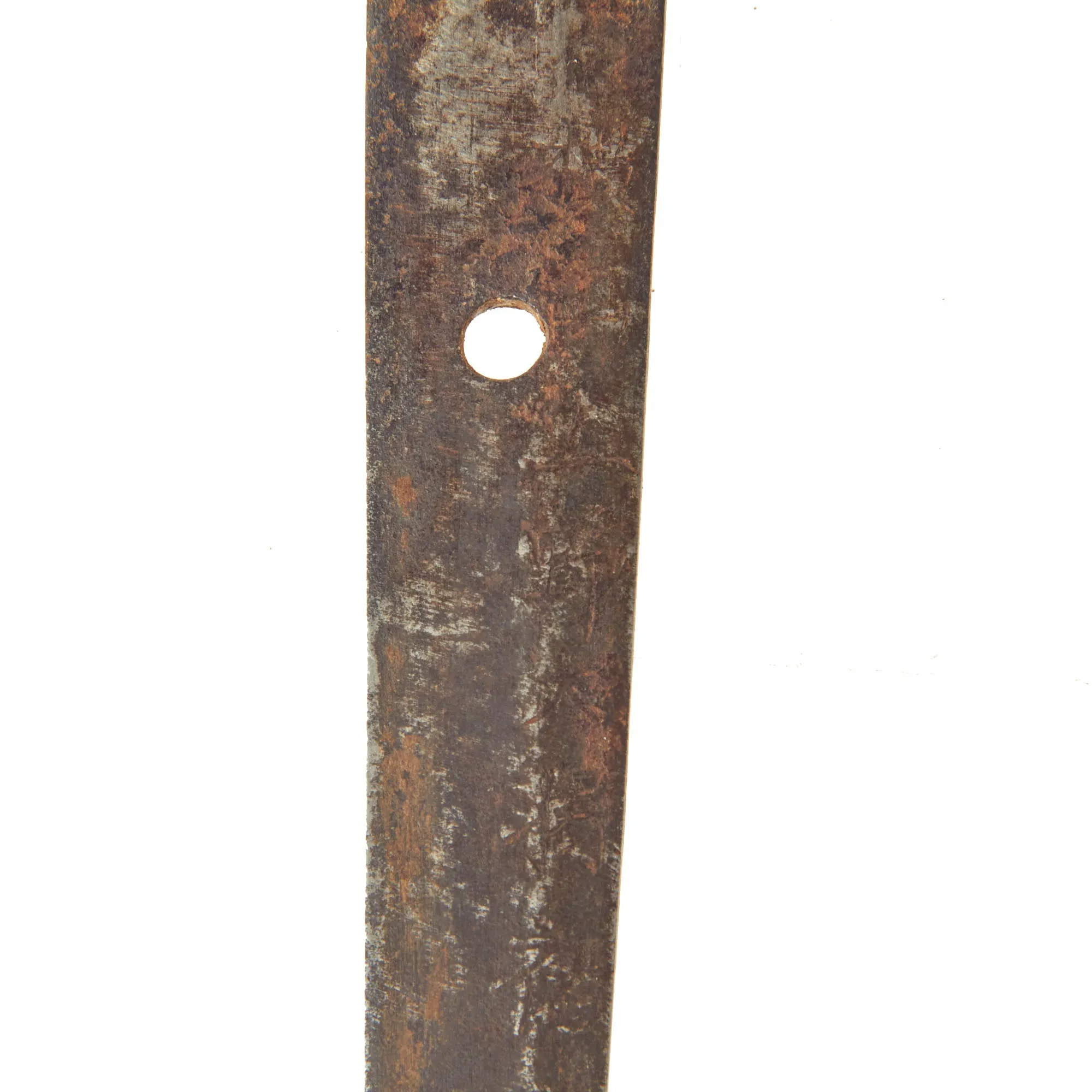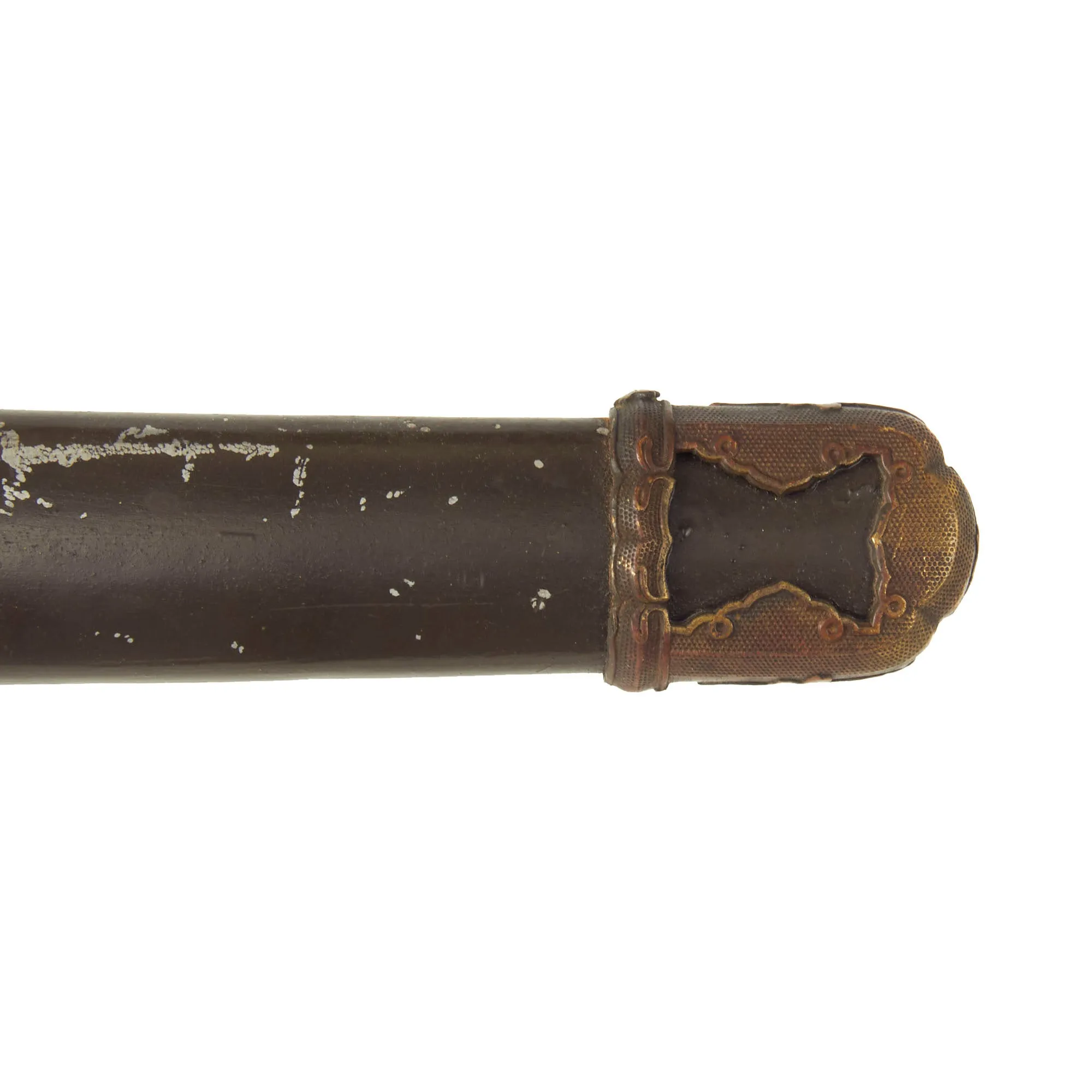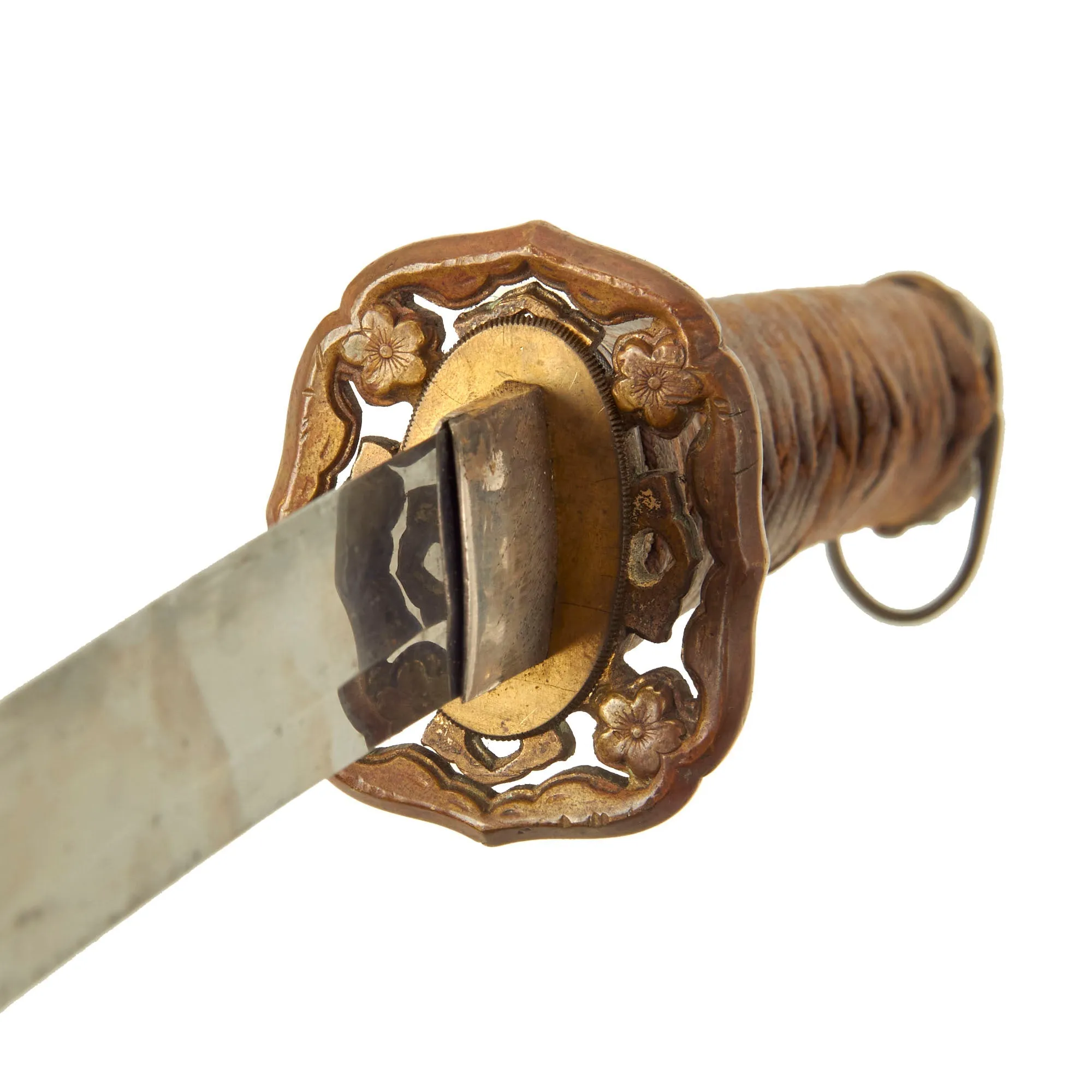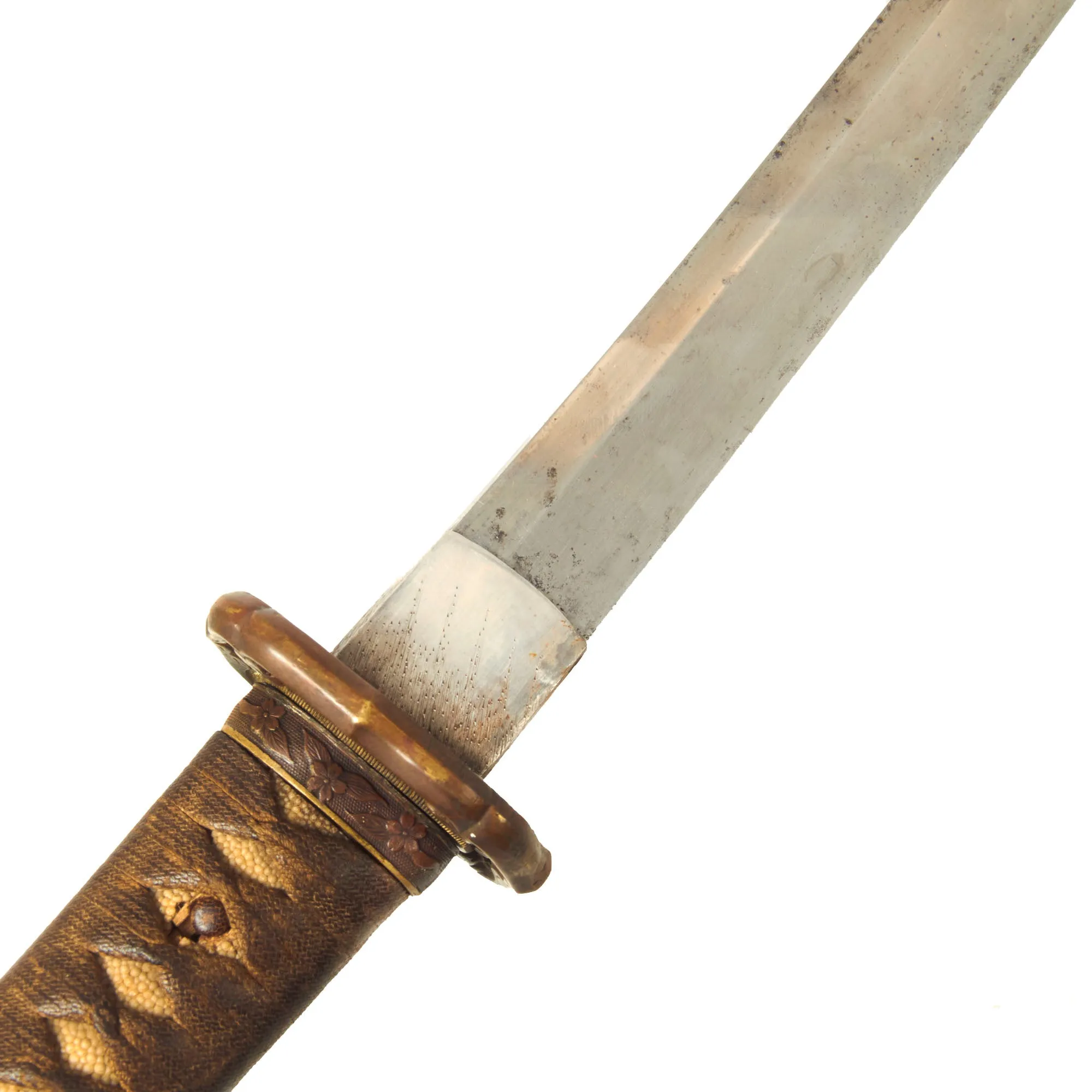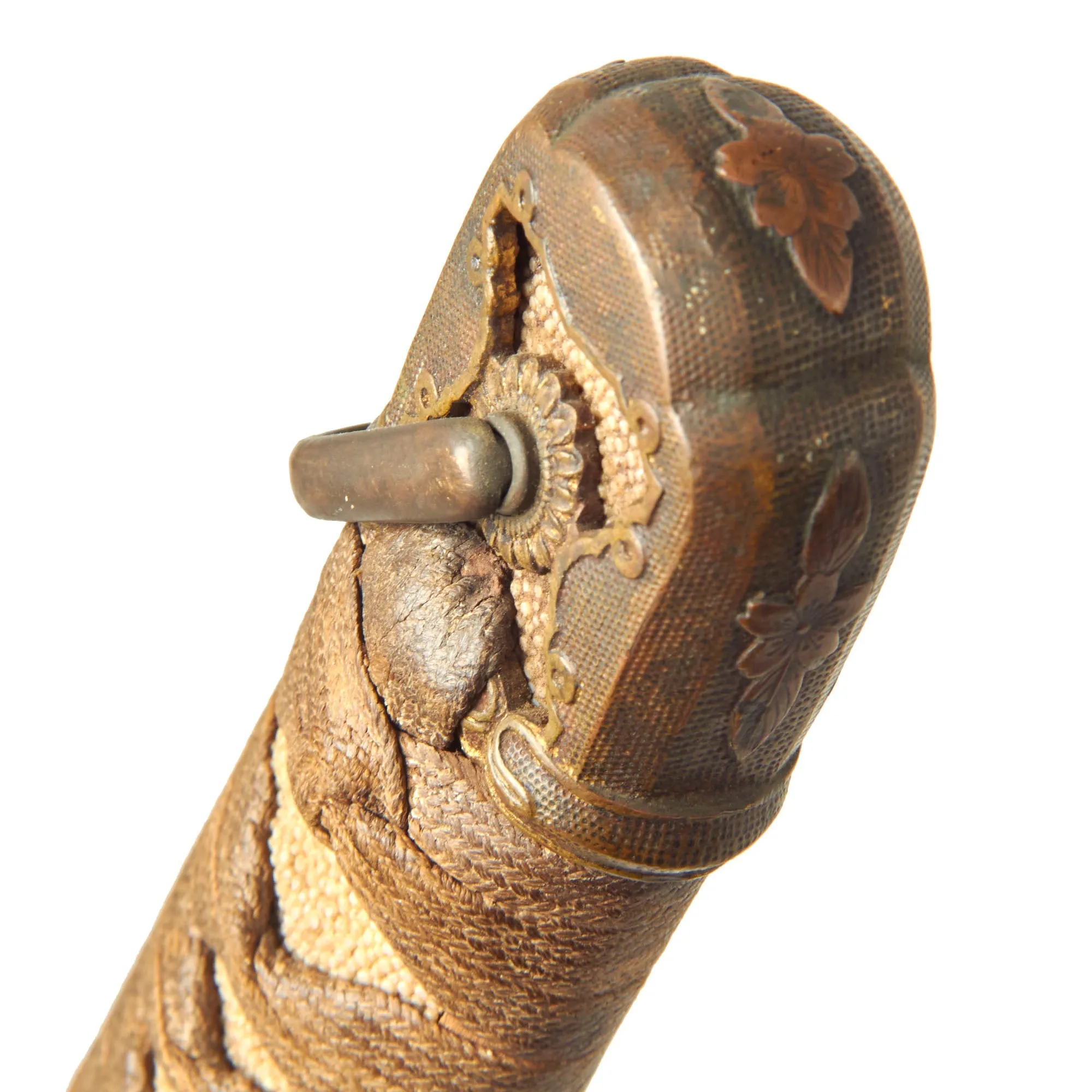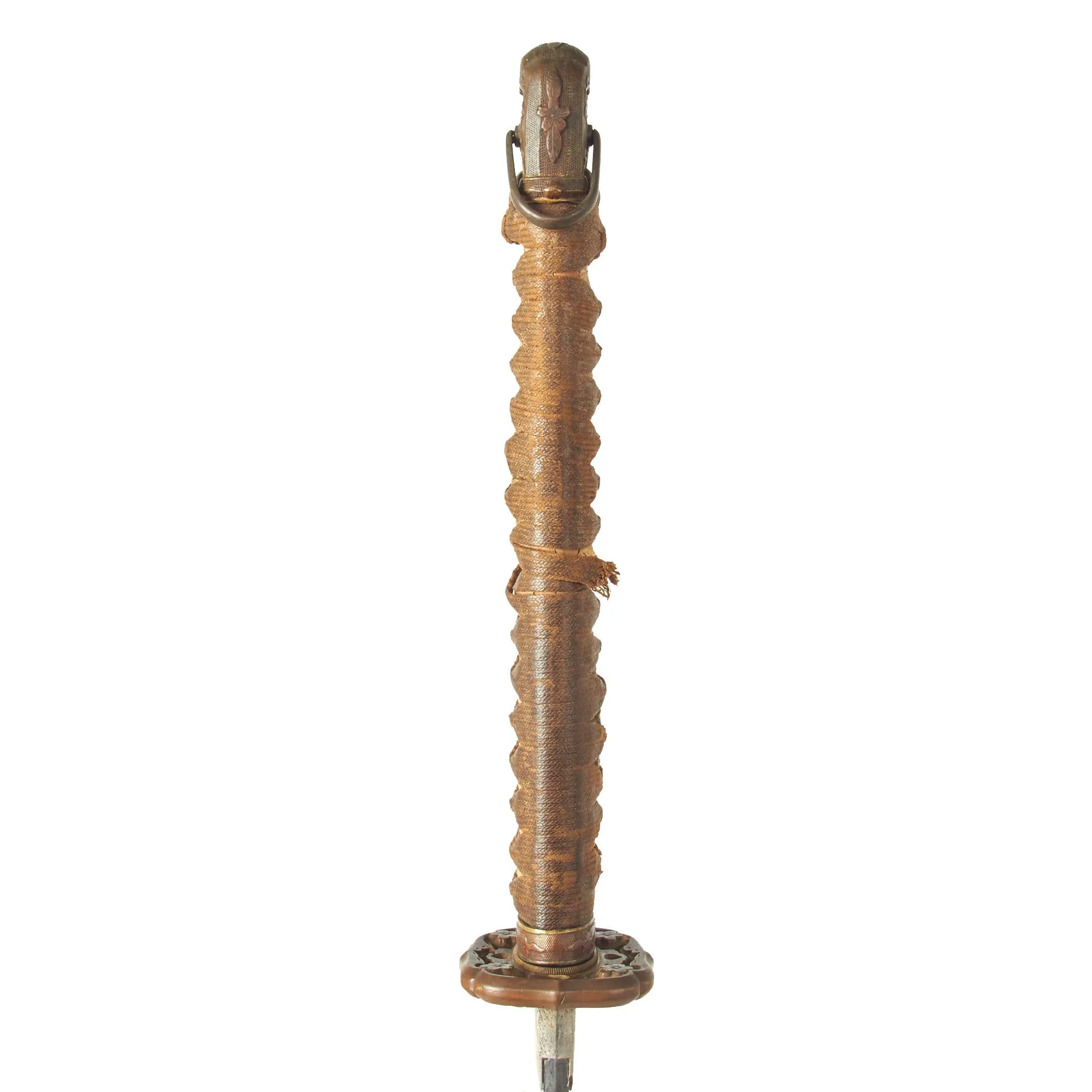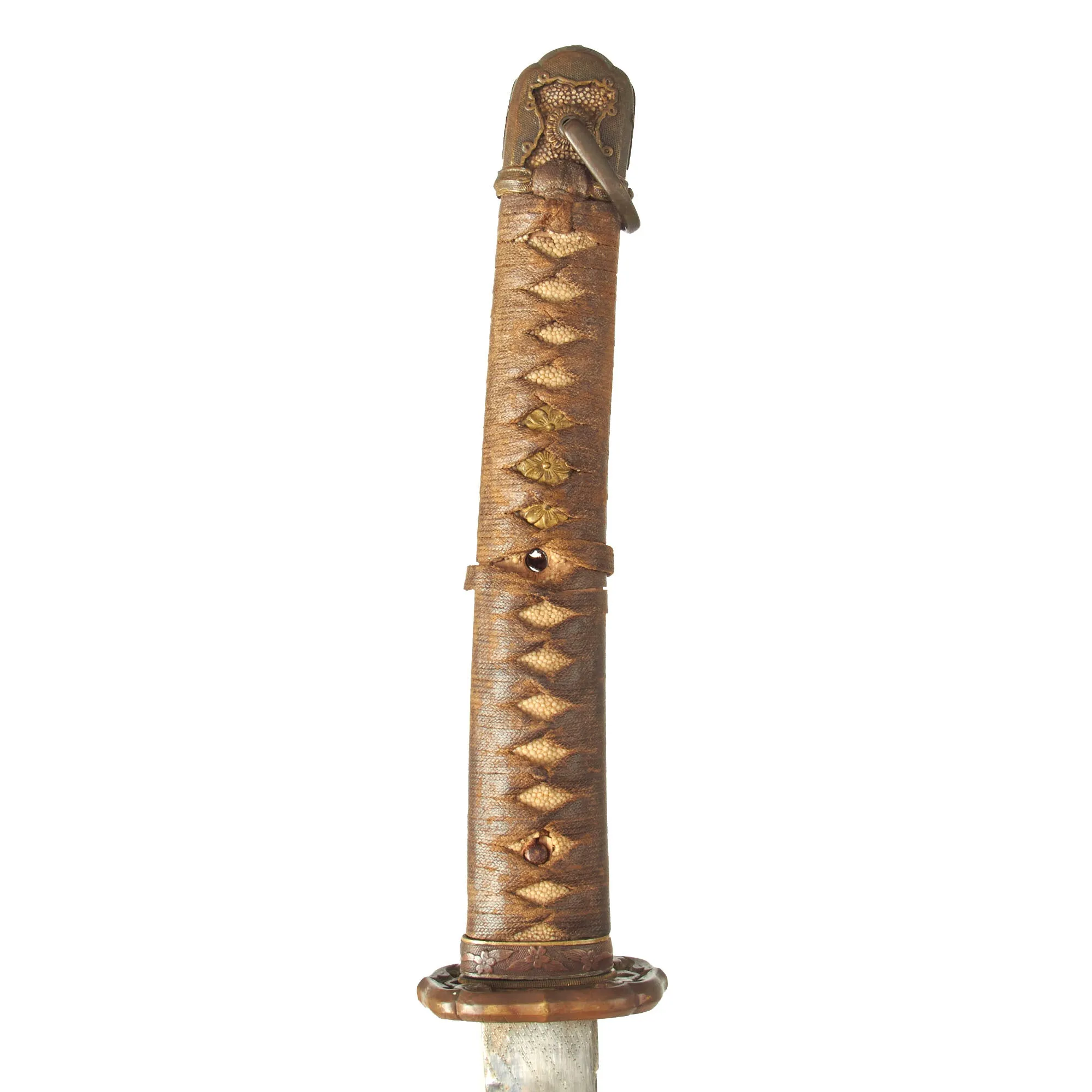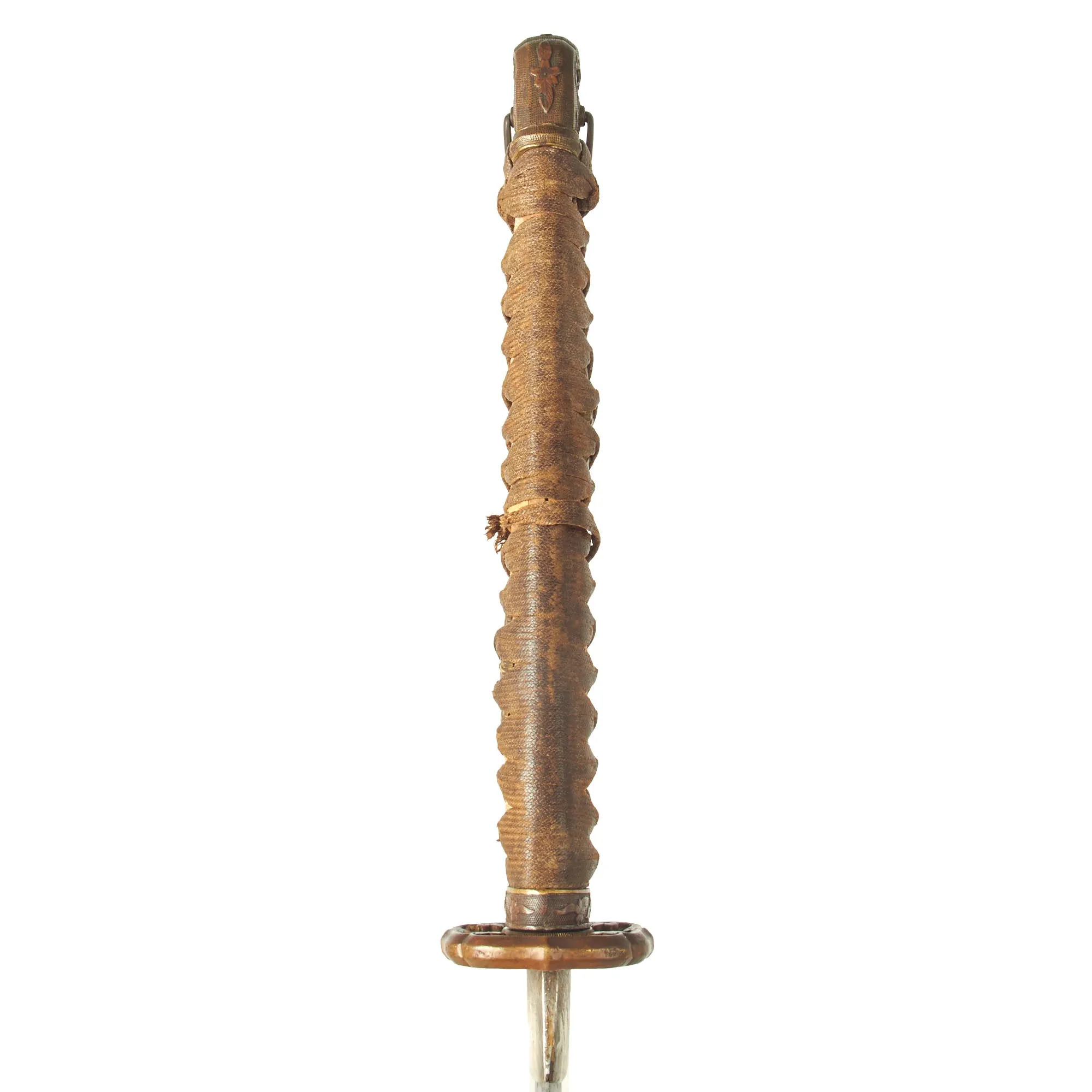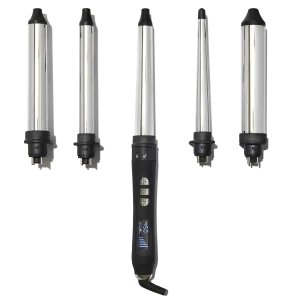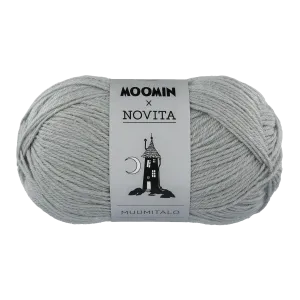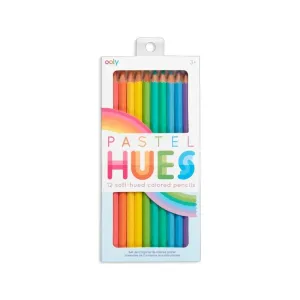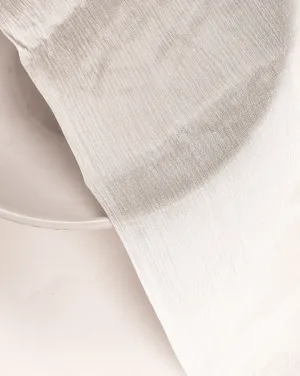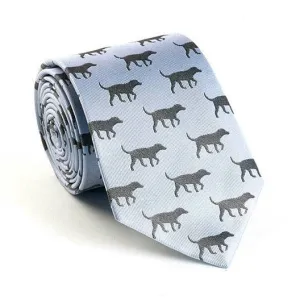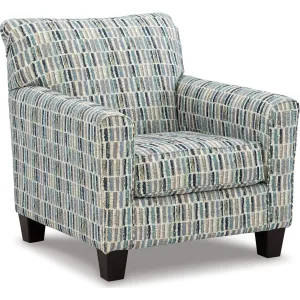Original Item: One of a Kind. Recently purchased at large military show, this is a wonderful USGI Bring-Back wartime production Japanese officer Katana in the Type 98 Shin-Gunto (九八式軍刀 kyūhachi-shiki guntō) setting. These type of fittings (koshirae) are slightly simplified compared to the earlier Type 94. A Shin-Guntō (新軍刀, new military sword) is a weapon and symbol of rank used by the Imperial Japanese Army between the years of 1935 and 1945. The blade tang is signed by the maker, and was made in the traditional fashion over 500 years ago! Even better, the maker was part of one of the most famous schools / lineages in Japanese swordmaking!
It was a common practice for swords to be passed down for generations, particularly ones that were of high quality. These would be re-polished and re-fit numerous times, as steel was precious and swords were expensive. This continued up into WWII, which is how this blade found it's way into standard WWII "Shin-Gunto" fittings, with a locking scabbard. There also was an official Japanese program during the war for families with no sons to donate their swords towards the war effort.
The blade on this example was hand forged during the early 16th century, and the tang of the blade is signed (Mei) with the characters 横 山 上 野 大 掾 祐 定 作, read as YOKOYAMA KODZUKE DAIJO SUKESADA SAKU. This roughly translates to "SUKESADA made this", with the preceding words being titles that were earned. It was common for well-regarded swordsmiths to have several different ways of signing their blades. One of these was 備前國住長船祐定作 = "BIZEN KUNI JI OSAFUNE SUKESADA SAKU", which basically means that the smith named Sukesada of the Osafune School made this sword in Bishu, or Bizen Province. This is a province with a long history of legendary schools of Japanese swordsmithing. Those who forged swords in the Bizen province, today known as Okayama prefecture, at the end of the Muromachi Period (1492-1569 A.D) are called Matsu Bizen.
Sukesada school was one of the most famous schools and it flourished for generations among Osafune schools (The main branch). There were various styles forged by the generations of Sukesada during this period. There were about 60 swordsmiths who used Sukesada as his maker’s name in the Samurai history.
The other side of the blade has a date, but it is only partly legible. We can however see the era name of 永正 - EISHO, which lasted from February 1504 through August 1521. This would indicate the blade was possibly made by the 1st or 2nd generation Sukesada, during the most desirable period of the school.
This is a very old blade, which has certainly been remounted several times, as was common for Japanese blades. This has made the file marks (yasurime) on the tang somewhat faint, and is also why there are two holes in the tang. It has a lovely patina, only present on blades that are hundreds of years old. This has however also made the mei, or signature on the blade harder to read, and removed the tagane (chisel marks) and tagane-makura (raised area around the mei). The tang may have also had the edges smoothed, changing the shape slightly.
The blade is handmade and was expertly crafted by a sword maker, which is indicated by a few tell-tale characteristics that include:
- Holes in the tang are punched and not drilled.
- Visible temper line ("hamon") with crystallization visible (Nie and Nioi), as well as lots of internal activity.
- Blade is signed on the tang by the maker ("Mei") as well as dated.
- Blade has a correct geometric Yokote at the tip (kissaki) with a Boshi (tip temper line)
- Blade has grain (hada) visible in the body (ha).
- Blade wounds (kizu) or lamination artifacts are present on the blade.
Offered in very good condition, the blade is still quite sharp, however unfortunately it looks to have seen long service during the war. The polish has become degraded over the entire blade, and there is also some light pitting near on the last 4 inches or so near the tip. This has made the aspects of the blade somewhat difficult to see, so they are only visible in the right light. Blade length is approximately 26 1/4 inches and overall length of 37 1/2 inches. The katana has a handmade blade with a Futsu 普通 (regular) Nakago (tang) and an Iriyamagata (asymmetrical pointed) nakago-jiri (tang tip).
Even with the polish issues, the temper line is definitely still visible, and looks to be the SANBONSUGI (三盆杉 - Three Cedars) pattern, which is a zig zag shape where every third wave is taller. Along the transition there are faint NIE crystals visible, with cloudy areas of NIOI in the body of the hamon. The tip temper line (boshi) is faintly visible, and is of the KOMARU (small turnback) type. The the blade has a proper geometric kissaki (tip), however the YOKOTE is unclear due to cleaning and oxidation. The body of the blade has clear hada (grain), which is of the MASAME (straight) pattern. We can see some blade wounds (KIZU) such as WARE (lamination lines) and FUKURE (Carbon pits).
The blade mountings (koshirae) are in good service used condition, and are the classic "high grade" WWII era Type 98 Army Shin-Gunto style, originally browned brass with gilt accents, but now worn to a mustard patina. These include a perforated rounded MOKKO GATA "quince" shaped tsuba (cross guard), only seen on high grade fittings. There are also brass Imperial Army cherry blossom menuki (grip decorations), and a nice Kabuto-Gane (Pommel Cap), with a brass loop. The cross guard and pommel cap have matching cherry blossom motifs, which are also found on the scabbard fittings, and the fuchi (grip collar). There are 2 Seppa (spacers) around the cross guard to keep the fit tight.
The blade collar (HABAKI) is a lovely silvered example, with a lovely "rain" texture on the lower half. This is definitely not a WWII production collar, and probably is from an earlier fitting of the blade. The handle (tsuka) has a nice stingray skin (Sa-Me) grip, with the correct golden brown Ito (cloth binding). The wrapping is definitely worn, and has torn through at one point. There is a single wooden securing peg (mekugi) still present in the upper peg hole (mekugi-ana), which is a post war replacement, while the lower peg hole is empty.
The Scabbard (saya) on this example is lightweight aluminum over wood and in very good condition, with most of the original textured brown paint intact. Aluminum scabbards are usually only seen on high grade blades, such as this one. There are some areas where the paint has been scratched off by service wear, but there are not any major areas of oxidation. There are a few dents in the shell, which were much more common on the softer aluminum shell. It has the correct single hanger loop of the Type 98 style, and the top fitting is is not inlet for a scabbard lock.
An incredible Japanese Type 98 Shin-gunto Katana with a 500 year old handmade blade by a famous Matsu Bizen smith! This is a real USGI bring-back from WWII, ready to research and display!
Specifications:
Blade Length: 26 1/4"
Blade Style: Katana
Overall length: 37 1/2“
Scabbard Length: 30"
It has been over one thousand years ago that the art of making swords appeared in Japan. The swordsmiths of the time may not have known it but they were creating a legendary sword. The Samurai sword has seen combat in many battlefields. From the early days of the Samurai warrior to the fierce battles in the South Pacific during WWII.
Each hand-made Samurai sword is unique because it is forged from folded steel stock. A tremendous amount of work is dedicated to creating these pieces. They were an instrument of war as much as a beautiful artifact to adorn a room.
The Samurai sword has grown to be one of the most highly desired military antiques.




